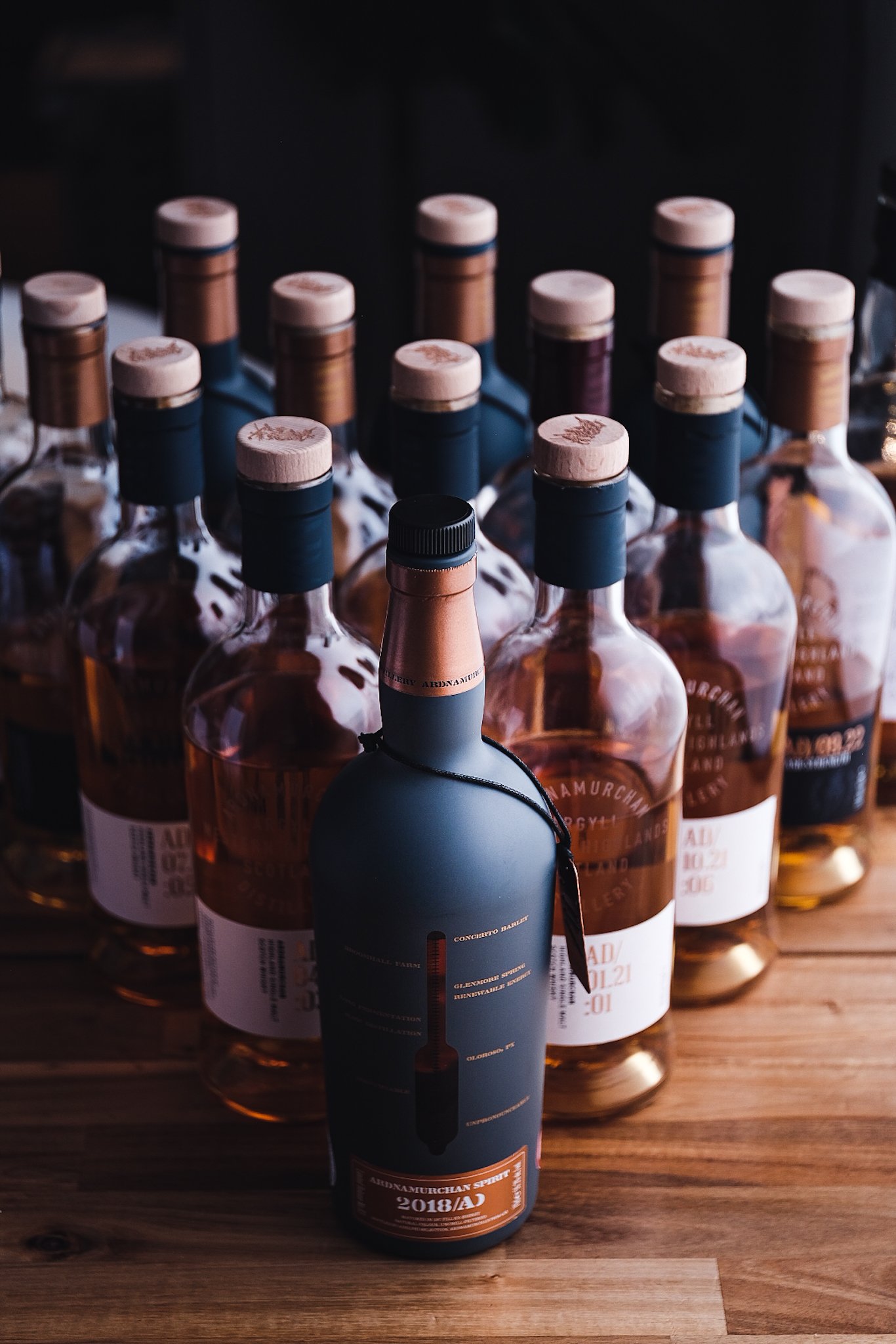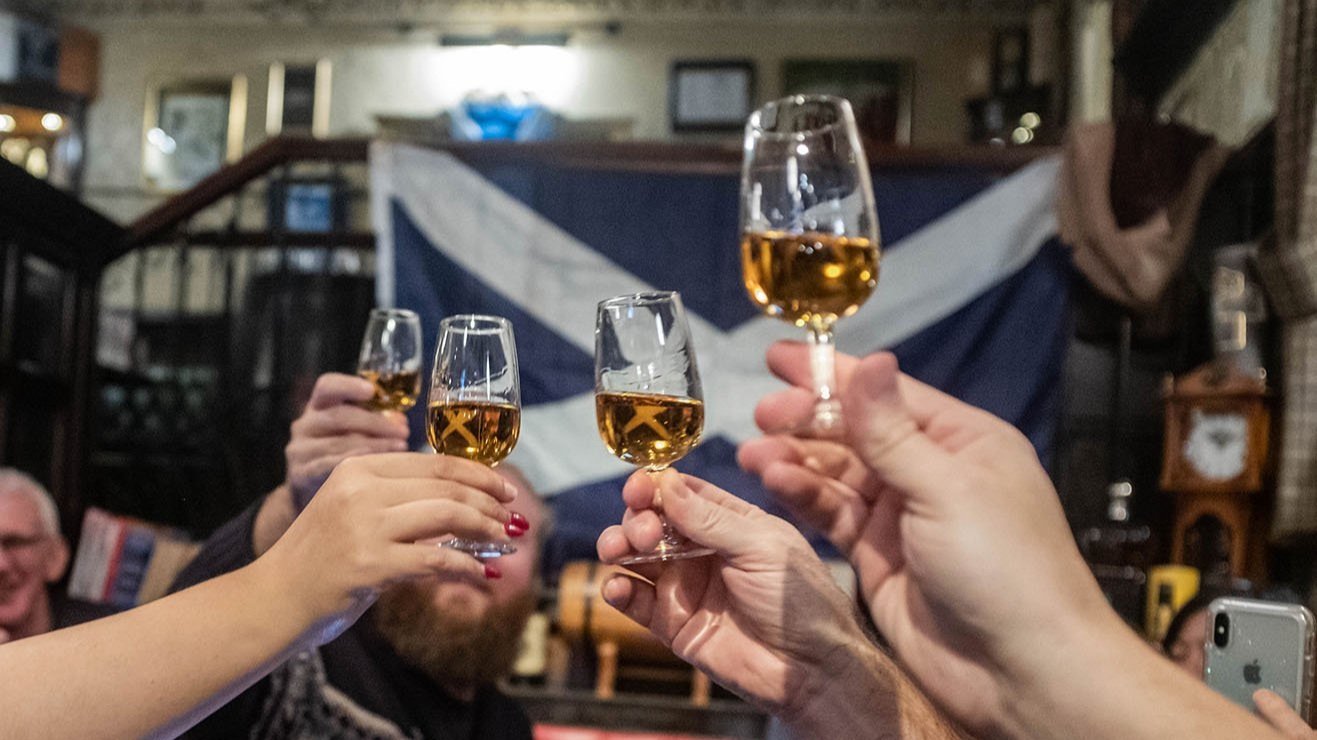Compass Box Orchard House
Blended Malt Scotch. 2024 Re-review | 46% ABV
Score: 6/10
Good stuff.
TL;DR
Fresh, easy, summer sipping
Summertime and not breaking the bank
About a 5 minute walk from where I live, there’s a place that specialises in craft beer. When I say craft beer, I’m talking specifically about those fruity, hazy IPAs that are all the rage right now.
I don’t know how popular these sorts of beers are on the continent, but in the UK, they’re everywhere. They tend to come in garishly coloured cans, which are often adorned with humorous, comic book style illustrations (think Boutiquey Whisky Company). Some of them have names like ‘Love Poem to Your Nan’s Dead Dog,’ and ‘Mike’s Big Bazooka’, and they usually cost about five quid a can. I’m making these names up, by the way, but they could just as easily be real.
Over the last few years, this style of beer has become ubiquitous here. We often talk about the whisky boom, but craft beer has seen a similar rise to prominence. Wind the clock back a decade – to a time when we all thought that Hoegaarden was dead posh – and the idea of paying six quid for a can of something called ‘I Played the Trumpet on That Tune’ (I’m not making that one up), would have been unthinkable. Just like in whisky though, there’s clearly a market for integrity-driven, flavour-forward beer, and people are willing to pay a premium for it.
Whilst I wouldn’t go as far as to call myself a beer enthusiast, I definitely have something of a penchant for these hazy hipster-brews. My beer buying habits tend to mirror my whisky buying habits, in that I typically go for un-fined (i.e., un-filtered), unpasteurized beers at a fairly high ABV. I don’t make tasting notes when it comes to beer, and I don’t spend anywhere near as much money on it as I do on whisky, but when the days start to get longer and the weather gets warmer – as is the case as I write this – I tend to find myself gravitating towards them.
Typically, this means that I drink less whisky. Like a lot of us, when I do reach for a dram at this time of year, I tend to give heavily sherried whiskies a swerve, in favour of lighter, fruitier expressions. From time to time, I’ll even pour a whisky over ice.
The bottle that I’m going to review here is one such whisky: a light, fruit-forward, easy sipper that’s perfect for this warm(ish) British summer. I first heard about this one a couple of years ago, when Andy at Malt Box reviewed it on his YouTube channel.
If you’ve never watched any of Malt Box’s reviews then they’re worth checking out. He posts fairly sporadically, but the videos are always fairly in depth and he has a good sense of humour. His review of Compass Box’s blended malt, Orchard House, was effusive enough to convince me to give it a go.
Since then, I’ve been through several bottles of this, and it’s still a whisky that I regularly return to. In fact, I’d go as far as to say that if you’re looking for an easy sipping, fruit-driven, blended whisky that won’t break the bank and which you can pour for guests – either neat or even, dare I say it, as part of a tall drink – then this one may well be your best bet.
The info on Compass Box’s website even suggests that it might be enjoyed ‘alongside a crisp, pale ale.’
Review
Compass Box Orchard House, Blended Malt Scotch Whisky, NAS, non-chill filtered and natural colour, 46% ABV
£42-ish and widely available
I don’t tend to buy whisky with my eyes, but I have to say that the artwork on the label of this Orchard House is really quite stunning. The marketing department at Compass Box clearly understands the power of suggestion, because it’s impossible to look at a bottle of this whisky and not expect to be ambushed by the mother of all fruit bombs, the second that you uncork it.
Of course, labels are secondary to what’s in the bottle though. Happily, when it comes to the stuff that really counts, Compass Box has that covered too. Not only is this 46%, non-chill filtered and of natural colour, but there’s also a batch number on the back of the bottle.
The idea is that you can go to the Compass Box website and download a PDF that gives you constituent malts that have gone into the blend, as well as the cask types and specific percentages. Unfortunately, though, Compass Box don’t seem to have updated this recently. I did email them asking for info about this particular batch – L11 06 23 – but nobody has come back to me, so we can only speculate as to the cask make-up. Previous batches contain whiskies from the likes of Benrinnes, Clynelish and Caol Ila.
It’s also worth mentioning that our own Clyde reviewed this bottle back in March 2022.
Score: 6/10
Good stuff.
TL;DR
Fresh, easy, summer sipping
Nose
The nose is fresh and fragrant – fruity, but also quite floral as well. I get apple blossom, some apricot, a little vanilla, some honeydew melon, a bit of toffee, and some green apple. There’s also an astringency to it, like lime cordial.
Palate
On the palate, I get Apple Jack sweets, some more vanilla and some watermelon Jolly Ranchers. Although it’s fruity, it’s also quite herbaceous as well. I get garden mint, some rosemary, a little lemon balm and a touch of root ginger. There’s also a tiny – and I do mean tiny – wisp of smoke that plays through the finish. According to the Compass Box website, previous batches of this whisky have contained a small amount of Caol Ila, and if that’s the case here, then that’s probably where the smoke comes from. Here it comes across as a hint of rolling tobacco, and provides a nice uplift. If you’re not a fan of peat, don’t let that put you off, though. It’s really, really subtle. Unless you go looking for it, you’re unlikely to notice it.
Looking on the fact sheet for previous batches, there have also been some sherried whiskies used in Orchard House before. Whilst this is very much a clean, bourbon-matured whisky, there is a little milk chocolate that plays in the background, so if there are any sherry matured components, then that’s probably where it comes from. In the finish there’s a nice refreshing bitterness, like sloes, or grapefruit. The mouthfeel is medium - not particularly oily, but weighty enough to not feel thin on the palate.
This isn’t a complex whisky, and it’s perhaps not quite the smorgasbord of fruit that the label suggests, but it ticks a lot of boxes, both in terms of price and flavour. With regards to similar whiskies at this price point, there are a few that might compete for your money, but the main ones that spring to my mind are Turntable’s Paradise Funk and Glencadam’s 10yo. If you enjoy either of these, then you should be right at home with this one. Paradise Funk is a blend, rather than a blended malt, so in a way, comparing it to Orchard House is a bit like comparing apples to oranges, but all the same, they’re marketed to similar tastes and they tick a lot of the same boxes.
Personally speaking, I prefer Orchard House to the Turntable blend. It has a bit more bite to it than Paradise Funk, and consequently, it offers a bit more engagement. I also prefer Glencadam 10yo a little more to either Orchard House or Paradise Funk; it’s a little more effervescent than either of them and a bit more complex.
The reason I mention these other whiskies is because, if you’ve enjoyed either of them, then this is a safe bet. That said, at this price point, there’s nothing to stop you from having a bottle of all three on the shelf.
The Dregs
In his perennially popular paean, ‘To Autumn,’ the Victorian poet John Keats talks about how Autumn ‘conspires’ with the ‘maturing sun, to load and bless the vines…to bend with apples the moss’d cottage trees’ and to ‘swell the gourd and plump the hazel shells.’ It’s a poem that seeks to capture the lavish munificence of the season. Whenever I look at the label on this bottle of Orchard House, Keats’ poem immediately springs to mind.
This isn’t an Autumnal whisky, though. At least, not for me it isn’t. The season of mists and mellow fruitfulness generally sees me reaching for decadent drams from the likes of Edradour, Glendronach and Glenallachie, as the nights draw in and the spicy warmth of a sherry cask begins to trump the understated elegance of something that’s matured in ex-bourbon.
If anything, this is a whisky for these long, warmer days of summer; a dram to pour alongside one of those hazy IPAs as you sit out late into the night with friends. It’s a bottle that you can leave on the table when you have guests over for a barbeque, secure in the knowledge that it’s easily replaced if they drink it all, and that there are no idiosyncrasies or challenging notes that a beginner might find off putting.
The only thing I would suggest, if you do buy a bottle, is to give it a chance to open up. Like I said, I’ve had several now, and one thing I’ve found is that the neck pour often tends to be quite uptight.
My advice would be to pour a dram and then leave it for a week or two, just to let some air get into the bottle.
After that, the fruit-forward character should start to reveal itself. Perhaps not quite as much as the label suggests, but enough to make it an ideal summer sipper that doesn’t break the bank.
Score: 6/10
Tried this? Share your thoughts in the comments below. FMc
-
Dramface is free.
Its fierce independence and community-focused content is funded by that same community. We don’t do ads, sponsorships or paid-for content. If you like what we do you can support us by becoming a Dramface member for the price of a magazine.
However, if you’ve found a particular article valuable, you also have the option to make a direct donation to the writer, here: buy me a dram - you’d make their day. Thank you.
For more on Dramface and our funding read our about page here.
Other opinions on this:
Got a link to a reliable review? Tell us.















































